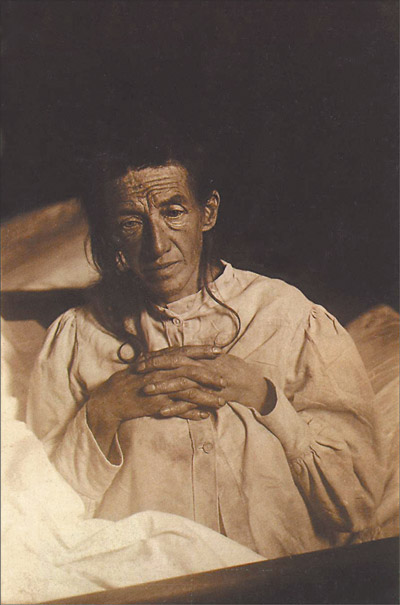Caleb Wilde
(218 comments, 980 posts)
Posts by Caleb Wilde
10 Pics to Help Us Celebrate the Death of Microsoft’s Internet Explorer
Yes, Microsoft has finally decided to phase out Internet Explorer.
But … I really think this should be celebrated.
We should celebrate because the murder rate should drastically drop as the lack of slow uploads will quell our murderous intentions:
The weapon of mass crashing has been disarmed …
We will no longer be put in this awkward situation …
And you will no longer make us feel guilty:
To be honest, you were never our default browser because you made us want to Office Space rage:
Hopefully, the next gen. of internet users will be able to look at the lowercase “e” and not have this reaction:
Good guy Google Search
Truth be told, we will miss the funny memes you produced:
RIP
21 Steps of an Autopsy

Image taken from the video MEDICOLEGAL AUTOPSY – PART I
Today’s post is an excerpt from The Odd Index by Stephen Spignesi and is being posted with Stephen’s permission:
1. The dead body arrives at the morgue.
2. The body’s identity is confirmed, assigned an identification number, and given a toe tag, which is a cardboard ticket with all of the corpse’s pertinent information written on it. This tag is tied to the big toe.
3. The body is photographed from head to toe, front and back, in the clothing it was wearing when it arrived at the morgue.
4. The body is photographed from head to toe, front and back, completely naked.
5. The body is weighed on a scale, and the weight is recorded. The body is also measured for length, and completely X-rayed.
6. The fingerprints of the corpse are taken. In instances in which hands and/or fingers are missing parts are duly noted.
7. The clothing the deceased was wearing upon arrival at the morgue is carefully examined. Fiber samples from the garments are taken for later study, and stains on clothing are noted and examined.
8. Any and all moles, wounds, tattoos, scars (including surgical scars), and other physical body anomalies are noted and examined.
9. The corpse’s fingernails, toenails, skin, and hair are examined. The skin on the arms and legs is carefully checked for syringe markings.
10. During a medical autopsy of a female, a rigorous examination of the external genitalia (labia, pubic hair, etc) is performed to determine whether or not there was a rape or sexual assault committed against the woman prior to (and/or after) her death.
11. Body fluids (blood, urine, etc) are withdrawn from the body and subjected to comprehensive toxicology tests.
12. The coroner makes a huge, full body-length “Y” incision that opens up the entire front of the body. The incision starts at each shoulder, proceeds on an angle down to the mid-chest, and then joins into a straight line that extends all the way to the pubis. This is the most dramatic element of a medical-legal autopsy, and most people who have never seen one performed are stunned by the dramatic way the body is spread wide by this incision. Many people have, at one time or another, seen some sort of surgical procedure performed. The incisions, even for major abdominal surgery, are thin, neat, and relatively “clean.” An autopsy incision need not be neat, nor concerned with excessive bleeding. Thus, the corpse is split wide open by a deep cut that is a very effective reminder that the person being autopsied is, in fact, quite dead.
13. First the organs of the upper abdominal cavity-the lungs, heart, esophagus and trachea-are removed. The coroner then takes out the lower abdominal organs, which include the liver, spleen, kidneys, adrenals, stomach, and intestines. Slices of each organ are taken and tested.
14. The internal genitalia of both males and females are examined. In the case of females, the uterus and vagina are carefully studied for signs of pregnancy, rape, or some form of sexual assault.
15. The organs of the pelvic region, including the bladder, the uterus, and the ovaries, are removed. Samples of each organ are taken and analyzed.
16. When the cause of death are either drowning or a suspected poisoning or drug overdose, the contents of the stomach are removed, examined, and carefully analyzed. All findings are recorded.
17. Any and all bullet wounds are recorded. The number of wounds is noted, as well as the perceived direction(s) of the bullet(s). An estimate, based on the configuration of the bullet entrance wounds, is made as to what distance the gun was from the victim when it was fired. All bullets are removed from the body and placed in plastic bags. The bullets are then examined and recorded as evidence.
18. First, a deep incision is made in the skin of the scalp. The cut, which is called intermastiod, begins behind one ear, travels over the top of the head, and ends behind the opposite ear. The scalp is then grasped firmly and pulled forward over the face, baring the skull. Using an electric saw, a wedge-shaped portion of the skull is cut out and removed, exposing the brain. The brain is then removed in its entirety, weighed, and examined.
19. Since he or she is now through with them, the coroner returns all of the removed internal organs to the body cavities.
20. The autopsy findings, complete with a final opinion as to the cause of death, as well as all reports and photographs, are turned over to legal authorities. This “package” becomes part of the corpus delecti, and is used as evidence in a court of law when necessary. The folder containing all of this detailed information is known as the case file.
21. A final determination is made as to the cause of death, and the death certificate is filled out.
For more information about the author, Stephen Spignesi, visit his website HERE.
Good Irish Funeral Music: “Danny Boy” Revisited

© 2012 Brian Eager, Flickr | CC-BY | via Wylio
Today’s guest post is written by NYC Funeral Director Amy Cunningham:
It seems fitting to reveal on Saint Patrick’s Day that the most common Google query that reliably draws readers to “The Inspired Funeral” day after day, week after week, is “Irish Funeral Music.” The last Irish funeral music post I wrote, garnered me tens-of-thousands of page views. Either the Irish are needing to know what is traditional or new to their own funerals, or those who aren’t Irish want to convey an Irish vibe to the festivities.
So lately, in my effort to be of sound funeral planning assistance, I’ve been fixated on how to make “Danny Boy,” the most famous of all Irish funeral ballads, new again. Can the beloved, seasoned, ever-so-classic-you-can’t-believe-they’re-trotting-it-out-again ballad be even more heart warming than it already is? Yes, it’s terrific–a total knock-out, in fact– sung in the classic mode by a male tenor, but here are some ideas you might consider when confronted with a funeral where “Danny Boy” is requested.
1. READ THE LYRICS AS STRAIGHT TEXT. DON’T HAVE IT SUNG AT ALL . Just read all four stanzas aloud from a podium, and grope for your handkerchief. Read it as a poem, aloud right now, and realize that by the time most singers get to the best, most moving lines, we listeners have been lulled into a sad, sweet snooze. (Take note, in stanza three: an “Ave” means “a prayer.”)
 Oh Danny boy, the pipes, the pipes are calling
Oh Danny boy, the pipes, the pipes are calling
From glen to glen, and down the mountain side
The summer’s gone, and all the flowers are dying
‘Tis you, ’tis you must go and I must bide.
But come ye back when summer’s in the meadow
Or when the valley’s hushed and white with snow
‘Tis I’ll be here in sunshine or in shadow
Oh Danny boy, oh Danny boy, I love you so.
And if you come, when all the flowers are dying
And I am dead, as dead I well may be
You’ll come and find the place where I am lying
And kneel and say an “Ave” there for me.
And I shall hear, tho’ soft you tread above me
And all my dreams will warm and sweeter be
If you’ll not fail to tell me that you love me
I’ll simply sleep in peace until you come to me.
2. HAVE IT PLAYED WITHOUT THE LYRICS AS AN INSTRUMENTAL ON A SLIGHTLY UNUSUAL INSTRUMENT. Here’s a super great “Danny Boy,” totally right for a funeral, on church pipe organ and solo trumpet. Here’s Eric Clapton playing it on guitar with characteristic emotion, and not singing a word. And if you’re bleary-eyed from too much funeral planning and need a little chuckle, here’s “Danny Boy” played as an instrumental, down in the NYC subway system, on a saw.
3. JETTISON THE MALE IRISH TENOR. Women have been singing “Danny Boy” beautifully since soprano Elsie Griffin belted it out at the turn of the century. My personal favorite female-rendered “Danny Boy” is Sinead O’Connor’s, recorded in such a way that you could quickly improve any “Danny Boy” funeral by cuing it from an iPhone into Bose speakers. Nice save. And don’t neglect the grandchildren! They can sing “Danny Boy” at a grandfather’s funeral, and rock the house (though funeral music should generally not be a performance).
4. FINALLY, CONSIDER EMPLOYING A MORE UPBEAT “DANNY BOY” AFTER THE FUNERAL’S CLOSING. This idea might not be everyone’s pint of tea (or Guinness), but imagine “Danny Boy” played on sprightly banjo, after all concluding remarks and benedictions, as people are warmly greeting each other, hugging, finding their coats, blowing their noses, and remarking what a good funeral it was (Irish or not). Moral: it’s okay for a funeral to leave people uplifted in the vast majority of instances, grateful that the deceased were with us for as long as they were, and happier themselves–goddamnit– to still be alive, resolved to make good use of whatever time is left.
*****
About the author: Amy Cunningham is a New York City funeral director and funeral celebrant especially passionate about getting families back involved in more personalized planning. She lectures on back-to-basics funeral planning and the greening of the industry. In her prior life she was a magazine journalist who wrote for Parenting, More, Glamour, and the Washington Post magazine. She is an active member of the National Home Funeral Association and ICCFA.
She writes a blog called TheInspiredFuneral.com
The Good Karma of a Tibetan Sky Burial: a video
In the high mountains of Tibet, where trees don’t grow, natural resources scarce, and the land is harsh, Tibetan Buddhists do not bury their dead, nor waste precious resources cremating the body. From dust to dust, flesh to flesh, nothing is wasted. Human body flesh makes precious food for the vultures. Tibetan Buddhists feed their dead to the vultures. This is good karma.













